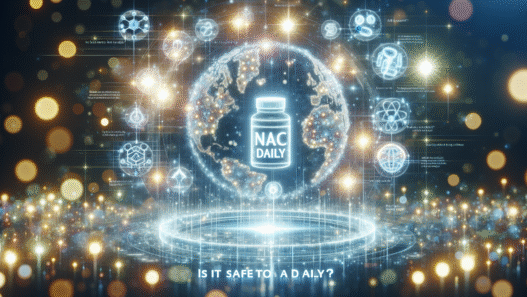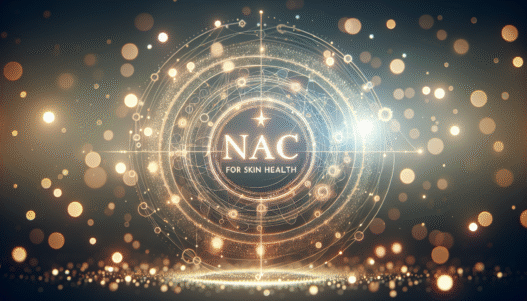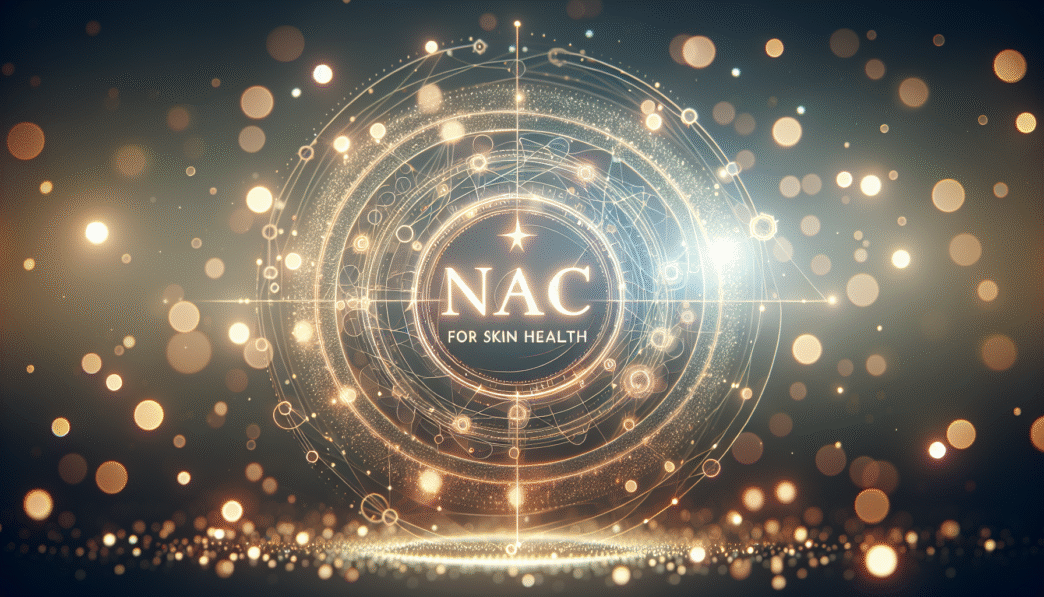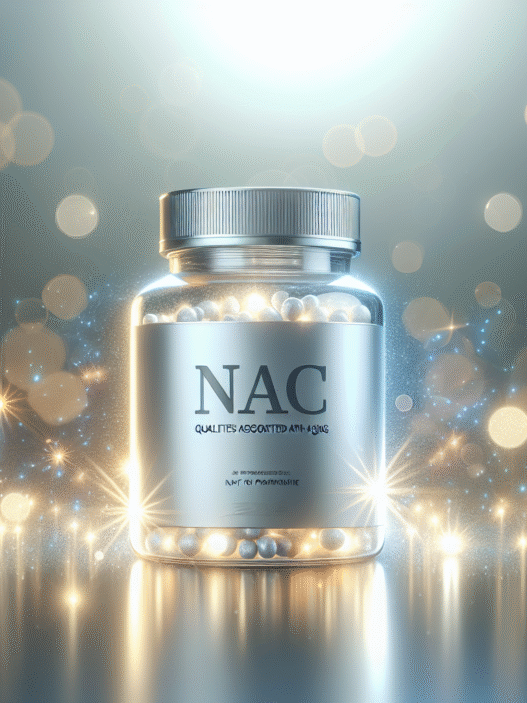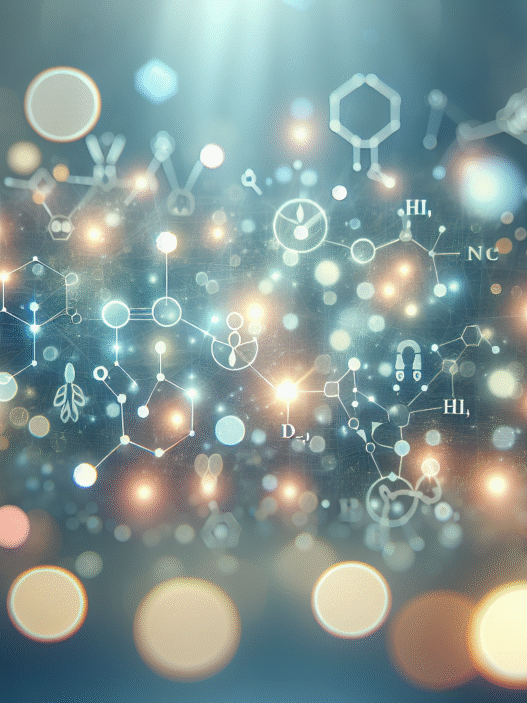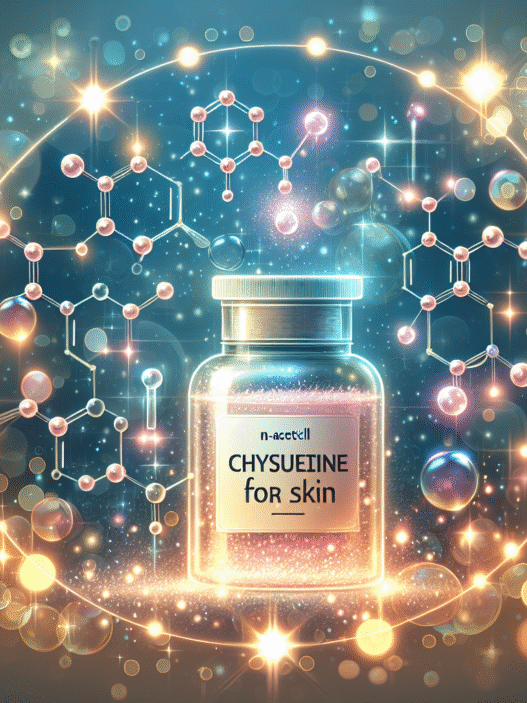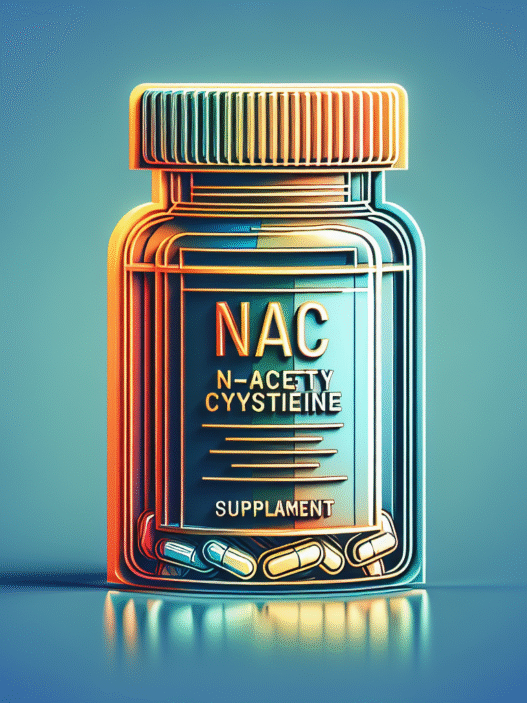Understanding N-Acetyl Cysteine (NAC)
What is NAC?
N-Acetyl Cysteine (NAC) is a supplement derived from the amino acid cysteine. It plays a crucial role in the health of the body by helping convert NAC to cysteine, which is vital for various physiological functions. The primary benefits of NAC stem from its strong antioxidant and anti-inflammatory properties, which assist in fighting disease and minimizing inflammation in the body.
NAC is recognized for its versatility, being used not only in health supplements but also in medical treatments, particularly for conditions involving oxidative stress.
The Role of NAC in Glutathione Production
NAC is essential for replenishing and maintaining levels of glutathione—a potent antioxidant that neutralizes harmful free radicals and protects the body from environmental damage. Glutathione plays a significant role in skin health, aiding in the prevention of oxidative stress, which can lead to premature aging.
Key Functions of Glutathione:
| Function | Description |
|---|---|
| Antioxidant Defense | Neutralizes free radicals, reducing oxidative stress. |
| Detoxification | Assists in the removal of toxins from the body. |
| Skin Protection | Helps maintain skin elasticity and reduces the impact of UV damage. |
NAC’s contributions to glutathione synthesis highlight its importance for individuals concerned about skin health and anti-aging. Given its capacity to enhance skin rejuvenation efforts, NAC has gained attention in discussions about nac for skin health and is often recommended in skin care regimens.
The potential skin benefits of NAC have made it a popular choice among those seeking longevity and improved skin appearance. Its effectiveness extends to various dermatological conditions, showcasing its multifaceted role in promoting overall skin wellness and health.
Benefits of NAC for Skin Health
N-Acetyl Cysteine (NAC) is gaining attention for its potential benefits for skin health. This powerful compound is linked to improvements in various skin conditions and enhancement of skin defenses.
Improving Skin Conditions
NAC has shown efficacy in various dermatologic conditions, such as acne vulgaris, atopic dermatitis, and systemic sclerosis. For instance, a clinical study revealed that a 5% NAC topical gel significantly reduced comedone counts in patients suffering from mild-to-moderate acne vulgaris. Additionally, NAC treatment in patients with systemic sclerosis resulted in fewer digital ulcers and a reduction in Raynaud’s attacks, highlighting its therapeutic potential for skin disorders related to circulation.
Moreover, NAC’s topical application has demonstrated promise in enhancing skin hydration and decreasing transepidermal water loss (TEWL) in individuals with atopic dermatitis. This underscores NAC’s role in maintaining skin moisture and improving overall skin texture.
| Skin Condition | NAC Effect |
|---|---|
| Acne Vulgaris | Reduced comedone counts |
| Atopic Dermatitis | Improved hydration, reduced TEWL |
| Systemic Sclerosis | Fewer digital ulcers, reduced attacks |
Enhancing Skin Defense Mechanisms
NAC is noted for its antioxidant properties, which play a critical role in protecting the skin against oxidative stress. By promoting glutathione production, NAC aids in neutralizing free radicals that can cause skin aging and damage. This antioxidant action supports the skin’s natural defense mechanisms, helping to minimize premature aging signs such as wrinkles and fine lines.
Studies show that NAC enhances wound healing through increased angiogenesis and lowered oxidative stress markers, contributing to stronger skin repair processes. These findings illustrate the potential of NAC as an effective component in wound care and skin rejuvenation (PMC).
For individuals interested in exploring the potential of NAC for skin health, various formulations are available, ranging from oral supplements to topical gels. Those seeking details on specific products can refer to our articles on nac supplement for skin and n-acetyl cysteine skin benefits.
By incorporating NAC into skincare routines, individuals may leverage its benefits to enhance skin condition and improve overall skin resilience.
NAC’s Impact on Mental Health
Understanding the mental health benefits of N-Acetyl Cysteine (NAC) is essential for those seeking natural ways to enhance well-being. Research indicates that NAC may play a role in improving symptoms associated with withdrawal and has potential applications in treating neurodegenerative conditions.
Reducing Symptoms of Withdrawal
NAC has been shown to help alleviate symptoms of withdrawal in individuals who have stopped misusing substances such as stimulants, cannabis, tobacco, and alcohol. This natural compound may assist in reducing cravings and the risk of relapse. In clinical settings, individuals using NAC experienced a decrease in withdrawal symptoms, which supports its protective effects. This highlights NAC’s potential as a supportive therapy for those working toward recovery.
Potential for Neurodegenerative Conditions
The utility of NAC may extend to neurodegenerative conditions, where it has the potential to combat oxidative stress and inflammation, which are significant contributors to the progression of diseases such as Alzheimer’s and Parkinson’s. Research has indicated that NAC helps inhibit the activation of pro-inflammatory pathways which can contribute to the neurodegeneration process.
While ongoing studies are examining the efficacy of NAC in these areas, its antioxidant properties make it a candidate worth considering for those interested in nac for anti-aging and longevity. For further exploration of NAC’s broad benefits, including its effects on skin health, visit our articles on N-acetyl cysteine benefits and nac antioxidant properties.
NAC and Metabolic Health
N-Acetyl Cysteine (NAC) may play a valuable role in metabolic health, particularly in balancing blood sugar levels and providing support for conditions like Polycystic Ovary Syndrome (PCOS).
Balancing Blood Sugar Levels
NAC has been studied for its potential benefits in regulating blood sugar levels. Research indicates that NAC may be particularly helpful for individuals experiencing insulin resistance. This is significant for those managing their metabolic health, as insulin resistance can lead to various complications, including type 2 diabetes. By improving insulin sensitivity, NAC may aid in maintaining stable blood sugar levels throughout the day.
| Condition | Potential Benefit of NAC |
|---|---|
| Insulin Resistance | Helps regulate blood sugar levels |
Support for Polycystic Ovary Syndrome (PCOS)
NAC might also provide benefits specifically for individuals with Polycystic Ovary Syndrome (PCOS). This condition impacts periods and ovarian function, and studies suggest that NAC supplementation could assist in managing symptoms associated with PCOS (WebMD). By improving insulin sensitivity and supporting metabolic function, NAC may help regulate menstrual cycles and enhance overall hormonal balance.
| Benefit for PCOS | Description |
|---|---|
| Improved Insulin Sensitivity | May help regulate blood sugar and hormonal levels |
| Menstrual Cycle Regulation | Could improve the regularity of menstrual periods |
Integrating NAC into a wellness routine can support metabolic health while also offering n-acetyl cysteine benefits for overall vitality. Whether it’s through supplements or dietary sources, individuals interested in nac for skin health can explore its broad therapeutic potential as part of their health regimen.
Exploring NAC for Liver Health
N-Acetyl Cysteine (NAC) is recognized for its significant role in supporting liver health. This section discusses its applications in detoxification and as a treatment for acetaminophen overdose.
Aid in Detoxification
NAC acts as a powerful antioxidant, primarily by increasing intracellular levels of glutathione, a crucial compound for detoxifying the body. By enhancing the liver’s natural detoxification processes, NAC aids in removing harmful substances and metabolic waste. Its anti-inflammatory properties further promote liver function and mitigate potential damage associated with toxins (NCBI).
The detoxification process facilitated by NAC involves the following steps:
| Detoxification Process | Description |
|---|---|
| Neutralization of Toxins | NAC binds to free radicals, reducing oxidative stress. |
| Promotion of Glutathione Production | Boosts glutathione levels, enhancing liver detoxification capabilities. |
| Inhibition of Inflammation | Reduces inflammatory markers that may affect liver health. |
Treatment for Acetaminophen Overdose
NAC is highly regarded in clinical settings for its efficacy in treating acetaminophen (paracetamol) overdose. It works by replenishing glutathione levels in the liver, which helps break down acetaminophen and prevents potential liver or kidney damage. For optimal results, NAC treatment should begin promptly, ideally within eight to ten hours post-overdose (WebMD).
Key aspects of NAC’s role in treating acetaminophen overdose include:
| Treatment Aspect | Explanation |
|---|---|
| Mechanism | Boosts glutathione to facilitate the breakdown of acetaminophen. |
| Timing | Most effective when administered within eight to ten hours of ingestion. |
| Outcome | Reduces the risk of serious liver damage and improves recovery likelihood. |
NAC’s benefits extend beyond liver health; it shows promise for various conditions as well. For more on its skin health benefits, view our section on NAC for skin health.
Risks and Considerations of NAC Use
When considering the use of N-Acetyl Cysteine (NAC), it is essential to be aware of its bioavailability, recommended dosages, and potential side effects. Understanding these factors can assist in making informed choices about its usage for skin health and overall wellness.
Bioavailability and Recommended Dosages
NAC supplements face significant bioavailability issues, meaning they are not efficiently absorbed by the body at lower doses. Research suggests that typical recommendations for NAC range from 600 to 1,800 milligrams daily, with some studies indicating that doses can go as high as 3,000 milligrams per day (WebMD). However, it is crucial to be cautious as excessive doses (7 grams or more) can have severe health implications, leading to cell damage, kidney damage, or even death.
| Dosage Range | Bioavailability | Potential Risks |
|---|---|---|
| 600 mg – 1,800 mg | Low (<10%) | Minimal adverse effects |
| Up to 3,000 mg | Low (<10%) | Risk of toxicity, cell and kidney damage |
| 7 grams or more | Low (<10%) | Severe health risks, potential death |
NAC can be administered in various forms—including orally, intravenously, or through inhalation—with intravenous administration achieving a peak plasma concentration far higher than oral doses. However, the challenges of absorption mean that users should consult healthcare professionals before starting any regimen.
Potential Side Effects and Adverse Reactions
While NAC is generally considered safe when used correctly, it may still cause adverse effects, particularly with oral administration. Common gastrointestinal symptoms include nausea, vomiting, itching, and erythema. The pungent smell of NAC, which resembles that of rotten eggs, can also contribute to discomfort for some users (NCBI).
Conversely, intravenous administration can also lead to nausea and vomiting, with adverse reactions occurring in up to 9% of patients. Being aware of these side effects is important for individuals considering NAC for various health benefits, including its efficacy for skin health.
For more information on dosages and products related to NAC, visit our articles on n-acetyl cysteine dosage and n-acetyl cysteine benefits. Staying informed can help in maximizing the benefits while minimizing risk, especially for those interested in nac for skin health and overall longevity.





